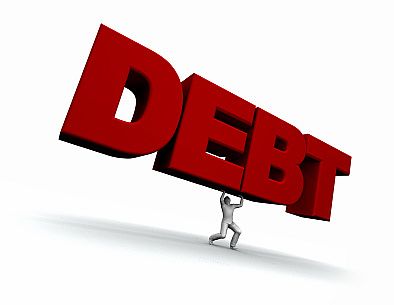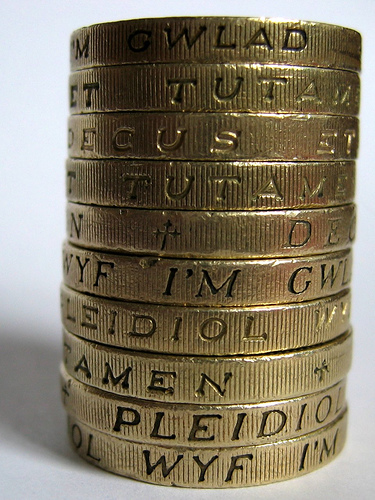The Free Market Center
Continual artificial creation of money1 poses an enormous threat to the future prosperity of the citizens of the U.S. Most people—including Presidents, Members of Congress, and Chairmen of the Federal Reserve System—don’t seem to comprehend the magnitude of this problem. But, a very few people do recognize the threat of artificial money creation2. Unfortunately, within that group, some espouse the illogical conclusion that money equals debt owed to banks.
 The validity of this argument depends on the truth of the argument’s premise of the substitutability of money and debt-to-banks. In order for money to equal debt-to-banks3 (or vice versa) a person must have the ability to substitute debt-to-banks for money (or money for debt-to-banks). The falsehood of this premise makes the proposition that money equals debt-to-banks also false. The distinction between checkable bank accounts4 (i.e. current money) and debt-to-banks, explains the fallacy of this premise.
The validity of this argument depends on the truth of the argument’s premise of the substitutability of money and debt-to-banks. In order for money to equal debt-to-banks3 (or vice versa) a person must have the ability to substitute debt-to-banks for money (or money for debt-to-banks). The falsehood of this premise makes the proposition that money equals debt-to-banks also false. The distinction between checkable bank accounts4 (i.e. current money) and debt-to-banks, explains the fallacy of this premise.
Loans comprise one of many categories of market exchange. Thus, a loan transaction, as with all exchanges, involves the exchange of two different economic goods. The borrower exchanges a promise of a future good (a debt-to-bank for money in the future and not a form of current money) for a promise of a current good (a checkable bank account or current money). Borrowers’ promises (not a form of money) and banks’ promises (a form of money) belong to entirely different categories of economic goods. A person cannot substitute one for (or make one equal to) the other.
The subjective theory of value proves that economic actors only exchange different economic goods. If the two were not different goods (i.e. if they were substitutable), no reason would exist for the exchange. Borrowers would simply exchange their promises directly for economic goods they want to purchase—bypassing the bank.
So, if bank promises do not equal the promises of those who borrow from banks, what do these bank promises promise?
Banks promise to provide their account holders with unique, specific, information—an intangible economic good. When a bank customer writes a check, he simply asks the bank to transfer information from his account to the account of the payee. This has been, in fact, what banks have done since the advent of money substitutes.
 When we still used gold as money, the unique characteristic of gold contained the information characteristics of money. The specific mineral, gold, provided a unique information medium. The weight—usually fractions of ounces—provided a unique unit of measure. And, possession—or a receipt from a storage facility—provided the proof of ownership.
When we still used gold as money, the unique characteristic of gold contained the information characteristics of money. The specific mineral, gold, provided a unique information medium. The weight—usually fractions of ounces—provided a unique unit of measure. And, possession—or a receipt from a storage facility—provided the proof of ownership.
Now, since we no longer use gold as money, we transmit the same characteristics of unique information—medium, unit, and ownership—in different forms. Digital storage in a bank provides a unique information medium. The dollar (or other currency) denomination provides a unique unit of measure. And, a unique account at a bank provides the proof of ownership. That digital information requires a special form of storage—i.e. a bank—whereas gold did not.
The advocates of the "money equals debt-to-banks" premise have made a couple of contradictory extensions to their logical error, which also need correction.
On the one hand, if money equals debt-to-banks, some believe the current bank account holders must rely on the loan payments of debtors to banks in order to pay checks that current bank account holders have written against their own accounts. This argument fails, however, because banks extinguish deposit liabilities, and thereby money, whenever debtors-to-banks pay down loan balances.
On the other hand, those who understand that banks extinguish money with the receipt of loan payments offer a variation on the same theme. They contend that, if money equals debt-to-banks, and loan payments cause the extinguishment of money, borrowers (private and public) must continue to borrow to keep money from disappearing altogether. The fallacy of this premise becomes clear when you see that banks need not engage in the acquisition of only debt instruments (make loans) to create money. If bank regulations did not limit banks to the acquisition of debt instruments, banks could create new money in order to acquire any economic good. Without those regulatory limitations banks could buy goats, furniture, or wheat and pay for all of them with the same promises they use to acquire debt instruments.
Finally, I hinted, in my title, that the phrase "money equals debt" does contain a grain of truth. The phrase “money equals debt” does not define the debtor. If the phrase refers to debt-to-banks (or any entity), money does not equal debt, as I have explained above. If, on the other hand, the phrase refers to debt-of-banks (represented by bank deposit account liabilities), then, in this one case, money does equal debt.
So, if someone tells you money equals debt, ask, “Who’s the debtor?”
I have not addressed the deleterious effects of artificial money creation here. That problem arises from the use of fractional reserves, regardless of the form of money—in the form of gold or in the form of digits at a bank.
1 This paper deals with money in the form of checkable bank deposits. (See note 4.)
3 To distinguish debt owed to banks from debt owed to other entities I have used a hyphenated version of the term: debt-to-banks.
4 The term “checkable bank accounts” refers to all bank, and bank-like, accounts that allow the owner to transfer money to another party by writing a “check.”
People frequently associate the idea of money as debt-to-banks with the myth that the money supply must grow perpetually to accommodate the payment of money interest.
This link takes you to an article that dispels that myth:
© 2010—2020 The Free Market Center & James B. Berger. All rights reserved.
To contact Jim Berger, e-mail: